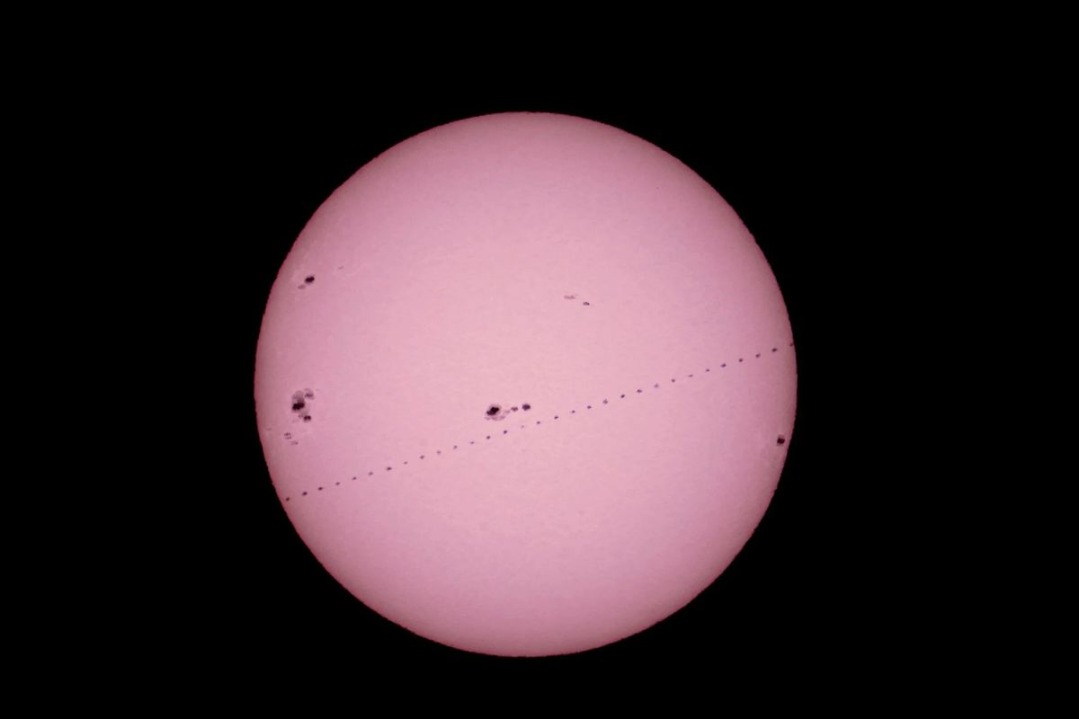Chang'e 5 launched to fetch moon samples


China launched a large robotic spacecraft early Tuesday morning at the Wenchang Space Launch Center in Hainan province, tasking it with landing on the moon and bringing back samples 44 years after the last lunar samples were returned to Earth.
A Long March 5 heavy-lift carrier rocket, the biggest and mightiest launch vehicle in China, lifted its 20-story-tall body from the launchpad and soared skyward with a spectacular silver flame at 4:30 am, leaving many spectators at and around the coastal Wenchang center in awe and excitement as the gigantic booster thundered up.
After about 37 minutes into the flight, the rocket successfully reached its destination in space and then placed the 8.2-metric ton Chang'e 5, which has four components-an orbiter, lander, ascender and re-entry capsule-into an Earth-moon transfer trajectory.
The heaviest and largest spacecraft in the nation's lunar probe fleet, Chang'e 5 will fly in the trajectory within the next several days and make some correction operations before conducting a key braking maneuver to avoid accidentally flying past the moon.
After it reaches lunar orbit, the probe will circle the celestial body for a certain period of time and then separate into two parts, with the orbiter and re-entry capsule remaining in orbit while the lander-ascender combination descends toward the surface.
The landing combination will make an engine-assisted touchdown on the moon and later start conducting assignments such as using a cutting-edge drill to obtain rocks from 2 meters beneath the surface and a mechanical arm to gather surface dirt.
If everything proceeds smoothly, about 2 kilograms of stones and soil will be collected and packed in a container inside the ascender.
After the surface operations are done, the ascender's rocket will lift it to lunar orbit to rendezvous and dock with the re-entry module. It will transfer lunar samples to the module and then undock from the latter.
The combination of the orbiter and re-entry capsule will then depart lunar orbit and return to an Earth orbit, where the pair will separate and the re-entry capsule will conduct a series of complicated maneuvers to return to a preset landing site in the Inner Mongolia autonomous region in December.
Back on the lunar surface, the lander will continue using its three scientific payloads to carry out surveying and measurements-the panoramic camera is tasked with mapping the topography of the landing site; the infrared spectrometer will determine the physical composition of stones and dirt around the landing site; and the soil measurement instrument will detect and analyze the subsurface structure of the drilling point.
The mission is scheduled to last around 23 days, according to the China National Space Administration.
Considering these highly sophisticated operations, the Chang'e 5 mission will be more difficult and challenging than previous Chinese lunar expeditions, designers said.
Peng Jing, deputy chief designer of Chang'e 5 at the China Academy of Space Technology, said the probe will land on the northwestern part of the Oceanus Procellarum, on the western edge of the moon's near side.
"This landing site was selected because it has never been reached by man or rover and also because scientists are interested in the geological history of that place," he explained.
Peng said designers devised many cutting-edge, delicate instruments for Chang'e 5, including the "excavator" mechanism at the end of the mechanical arm and the transfer equipment on the ascender and the re-entry module.
He mentioned that designers installed two types of collection tools on the probe in hopes of obtaining various types of samples to facilitate scientific studies.
Another consideration is that two types of methods will reduce the risk of failure and improve the probability of success, he said.
- Xiamen Marathon runners banned for smoking on course
- China's Shijian 32 satellite launch mission fails
- China's anti-graft efforts deepen in 2025, with 115 senior officials probed
- Norovirus infections sicken over 100 students in Guangdong school
- Snapshots of Chinese space station passing in front of sun
- China accelerates nuclear fusion engineering, targeting power generation demonstration by 2030




































